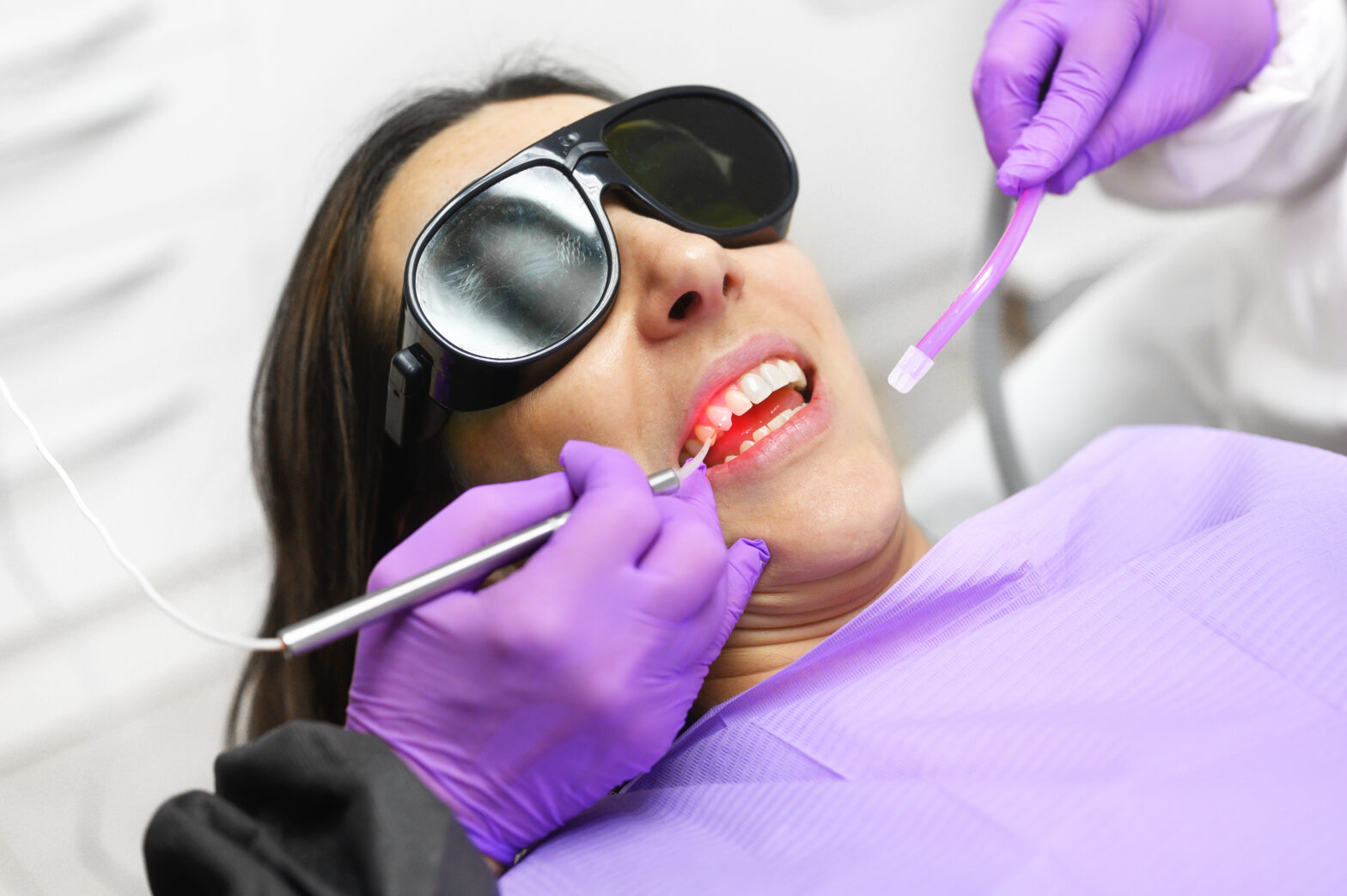The Role of Laser Technology in Modern Dentistry
Written by Scripps West Dental

Scripps West Dental is transforming the world of dentistry in sunny San Diego with laser technology. You might wonder what laser dentistry is and how it can benefit you. Well, let’s look at the basics and how to schedule a consultation with us. Let’s get started!
What is Laser Dentistry?
Simply put, laser dentistry is the use of lasers in dental procedures. These are not the lightsabers you’ve seen in your favorite sci-fi films, but they’re just as remarkable! Dental lasers are devices that emit concentrated beams of light energy. These high-tech beams are harnessed to treat a wide range of dental conditions, making them a game-changer in modern dentistry.
There are two primary types of dental lasers:
- Soft Tissue Lasers: These lasers are gentle and are primarily used for procedures involving gums and other soft tissues within the mouth. They’re perfect for reducing bacteria, reshaping gums, treating canker sores, and removing excess tissue.
- Hard Tissue Lasers: On the other hand, hard tissue lasers are used on teeth and bones. They are invaluable for cavity detection, teeth whitening, and preparing teeth for fillings.
Advantages of Laser Dentistry
Laser dentistry brings benefits to both patients and dentists. Let’s explore why lasers have gained popularity:
Minimally Invasive: Say goodbye to the days of extensive incisions and painful sutures. Laser dentistry is remarkably precise, causing minimal damage to surrounding tissues. This means less pain, less bleeding, and reduced recovery time.
Reduced Pain and Discomfort: Patients undergoing laser dental procedures often experience less pain and discomfort during and after the treatment. The laser’s precision helps minimize damage to healthy tissue and eliminates the need for anesthesia.
Faster Healing: With less tissue trauma and bleeding, recovery after laser dental procedures is typically faster. Patients can return to their normal activities more quickly than with traditional methods.
Precision and Accuracy: The pinpoint accuracy of lasers means that healthy tissue is preserved while the targeted area is treated effectively. This precision is particularly valuable for delicate procedures like gum contouring and root canal therapy.
Reduced Risk of Infection: The heat generated by dental lasers has a sterilizing effect, reducing the risk of post-operative infections.
Can Laser Dentistry Help with Gum Disease?
Absolutely! Gum disease, or periodontal disease, is a common dental issue. Laser dentistry has revolutionized gum disease treatment, making it less invasive and more comfortable for patients. Here’s how it can help:
Gum Contouring: Soft tissue lasers reshape and contour the gums. This procedure often addresses “gummy smiles” or an uneven gum line. The precision of laser technology makes the results more aesthetically pleasing, and patient discomfort is minimized.
Periodontal Treatment: Laser technology is used to remove infected tissue and bacteria from periodontal pockets in a minimally invasive manner. The laser also stimulates tissue regeneration, aiding in faster gum healing.
Reduced Swelling and Discomfort: Traditional gum disease treatments can lead to post-operative swelling and discomfort. Laser dentistry significantly minimizes these side effects, making recovery much more manageable.
Recovery Period after Laser Dental Treatments
Now, let’s talk about recovery after laser dental treatments. The duration of your recovery can vary depending on the type of treatment and your response. However, here’s a general overview of what you can expect:
Gum Contouring: Following gum contouring with a soft tissue laser, patients may experience mild discomfort, some swelling, and minimal bleeding. These symptoms usually subside within a few days, allowing patients to return to their regular activities relatively quickly.
Periodontal Treatment: Laser-assisted periodontal treatment may involve a brief recovery period characterized by minimal discomfort, some swelling, and possibly mild bleeding. Healing usually takes a few days to a week, during which patients are encouraged to maintain good oral hygiene practices.
Other Laser Procedures: For other laser dental treatments, such as cavity detection or teeth whitening, there is typically minimal to no downtime. Patients can resume their daily routines immediately.
How Long Does a Laser Dental Procedure Take?
The duration of a laser dental procedure can vary based on the type of treatment and its complexity. Here’s a general idea of the time involved:
- Gum Contouring: A typical gum contouring procedure can be completed in as little as 30 minutes to an hour. It’s a quick and convenient option for enhancing your smile’s appearance.
- Periodontal Treatment: Laser-assisted periodontal treatment may take a bit longer, usually between one to two hours, depending on the extent of the disease. However, this time investment can significantly improve your oral health.
- Other Laser Procedures: Procedures like cavity detection and teeth whitening often take 30 minutes to an hour.
Schedule Your Consultation
Are you excited to experience the wonders of laser dentistry? We’re thrilled to introduce you to this innovative world at Scripps West Dental in San Diego! Call us today to schedule your consultation!